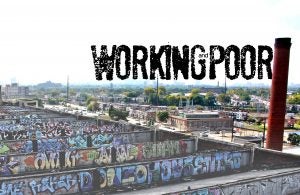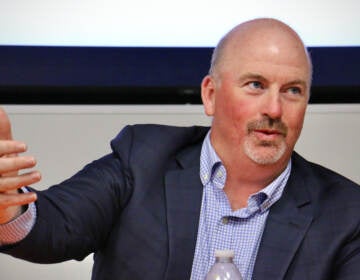An overlooked constituency, issue on campaign trail
Listen 5:33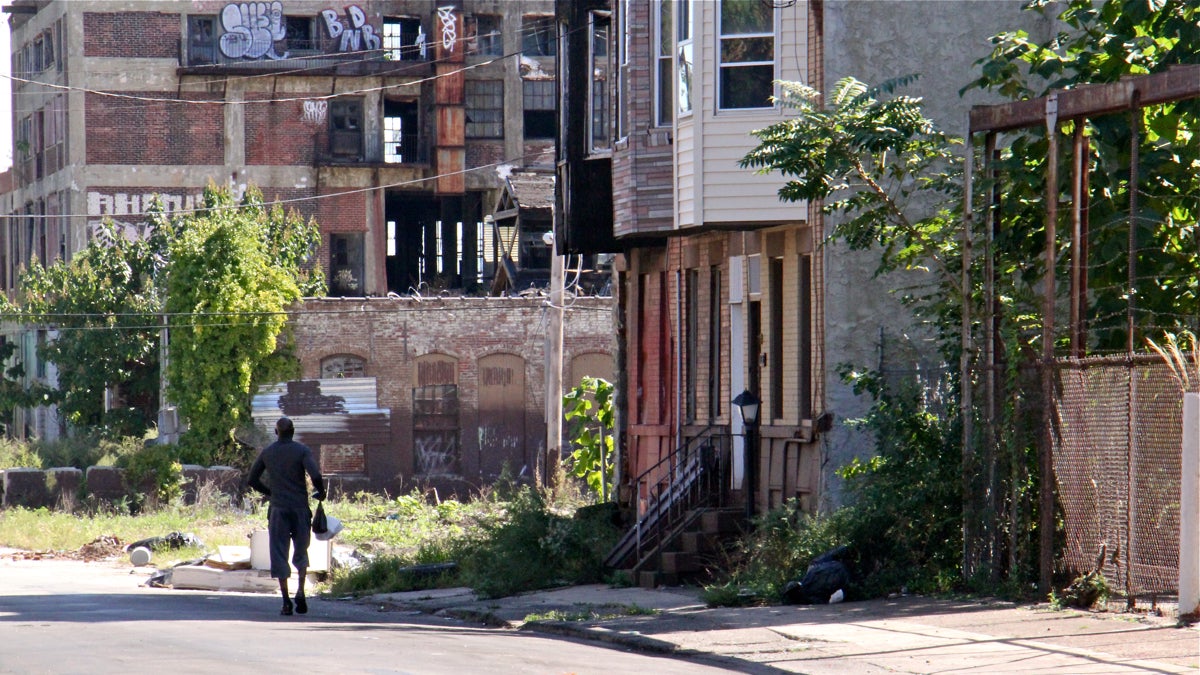
West Clearfield Street in North Philadelphia dead-ends at an abandoned factory. (Emma Lee/WHYY)
Nationwide, about 43 million people live below the federal poverty line. Here in Philadelphia and the surrounding suburbs, 800,000 people are struggling to make ends meet. In the weeks before November’s general election, we’ll examine how the policies put forth by our presidential candidates would affect them.
This is part one in a series, Working and Poor.
—
Imani Sullivan waited patiently. From her seat near the back of a mostly empty Temple University auditorium, she listened to the handful of anti-poverty advocates on stage for a panel coinciding with July’s Democratic National Convention.
For nearly an hour, they discussed the impact of Philadelphia’s newly enacted sugary drinks tax, debated how much power Hillary Clinton or Donald Trump would truly have to help the poor if elected, and offered some solutions to one of the most complex and persistent issues the city faces.
Then, when it came time for questions, Sullivan seized her moment. She stood up, walked toward a microphone planted in an aisle and politely told the room the stage was missing something big — people like her who are living in poverty.
“How would I be part of this?” she asked inside Temple University’s Performing Arts Center.
The panelists didn’t offer her a firm answer, but not because Sullivan’s experience is unique. The single mother is one of roughly 800,000 people in Philadelphia and the surrounding suburbs who live below the federal poverty line. That means a family of four living on $24,300 a year and stretching those dollars to pay for food, clothing and housing.
Sullivan, who has three children, lives on roughly half that amount, plus whatever cash she earns from the occasional house-cleaning gig. She lives in what’s known as “deep poverty.”
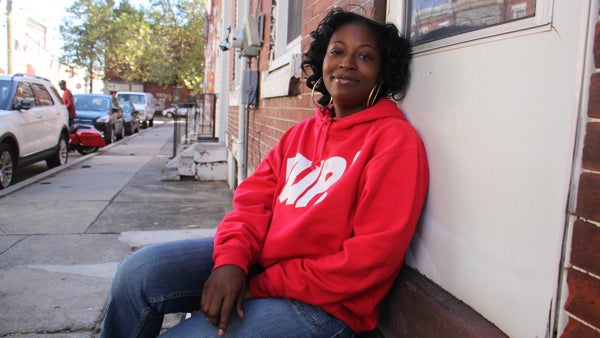
“The hardest part is telling your kids, ‘I don’t have enough to get that,’” said Sullivan from her front stoop in Nicetown a few weeks after she spoke up at the panel. “And it’s not necessarily something that they want. It could be something that they need.”
For example, telling one of her children she can’t afford to buy a new pair of sneakers.
“How hurtful is it to tell your son you have to wait at least two more weeks or a month … but you have a hole in your shoe?” she said.
‘Poverty’ rarely mentioned on campaign trail
Nationwide, about 43 million people live like Sullivan. But, like the panel event, the poor have mostly been left out of this year’s presidential election. When Clinton and Trump get on stage, they rarely even say the word “poverty.”
It’s not an accident, said Dan Hopkins, a political science professor at the University of Pennsylvania.
Researchers have found that the poor tend to vote less than those with higher incomes. Recent census data showed that just about a quarter of American families making less than $10,000 a year voted. Those earning $150,000 or more had a turnout of 56.6 percent, the highest figure.
“People living in poverty are “going to be more focused on getting food on the table,” Hopkins said. “They’re going to be focused on a very, very personal set of concerns. And so, ironically, some of the people who might, in some sense, most benefit from a change in government policy are those who are least in a position to advocate for it.”
Candidates also know that Americans — regardless of how much they make or how financially secure they are — tend to think of themselves as middle class, giving them another reason to steer away from the word “poverty.”
Instead, they refer to a growing gap. Clinton uses the phrase “income inequality,” while Trump lifts up the divide between wealthy “elites” and the rest of the country.
“Income inequality reframes the issue of poverty in a way that makes it more accessible and makes it potentially broader in its impact,” said Hopkins.
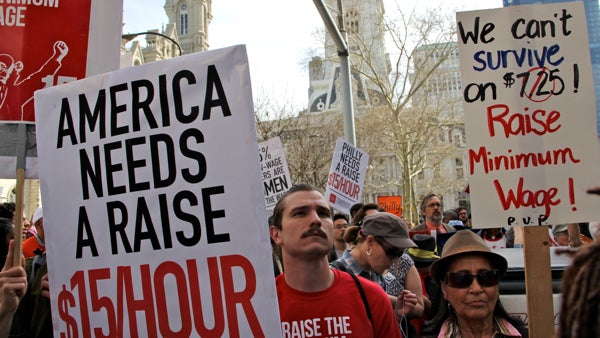
On the campaign trail, the candidates have both weighed in on raising the minimum wage, making child care more affordable, and boosting the number of well-paying jobs — platform points that would certainly not only affect those living in poverty, but also many other Americans who live above that line and still struggle to make ends meet.
These are the issues NewsWorks/WHYY will explore in a new series called “Working and Poor.” In the weeks before November’s general election, we’re going to examine how these policies could affect the more than 800,000 people in the Philadelphia region living from paycheck-to-paycheck — if they get one at all. That’s because, come January, one of these two candidates will be taking these ideas from the campaign trail to the real world.
WHYY is your source for fact-based, in-depth journalism and information. As a nonprofit organization, we rely on financial support from readers like you. Please give today.


